Physical Therapy for Hip Pain
Are you having pain with walking, running or jumping? Do you notice deep aching groin pain? Difficulty or pain turning your leg in and out? Difficulty or pain sitting or bending forward? Hip pain and injuries are common, especially in sports that include running and jumping. Our hip joints take a lot of impact during these types of activities. That’s why it’s important to have healthy hip joints to stay active. At Symmetry Physical Therapy, we are specially trained in assessing the cause of your hip pain and creating a treatment plan for you. We want to help so you can get back to doing what you love. Click here to schedule an appointment with us at our clinic located in Downtown Miami/Brickell! Keep reading below to find out what your experience will be with us.
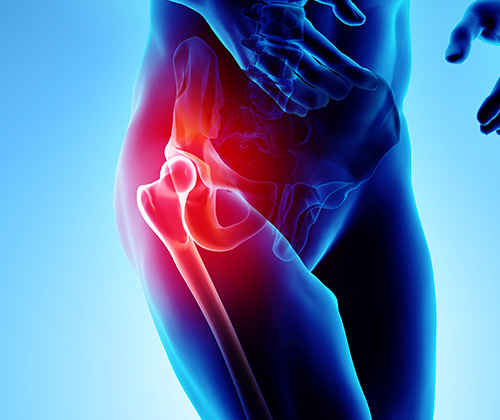
What is Causing My Hip Pain?
Your physical therapist will spend the first day performing an initial evaluation to determine the cause of your hip pain. When assessing hip pain, it is important to know what the diagnosis is. Your physical therapist will also evaluate you based on how you present as an individual. The first step is a thorough history which will ask about any previous injuries, surgeries, or medical conditions. Then your therapist will ask questions about aggravating activities, your lifestyle and activity level. Come prepared to answer questions such as:
- How did the pain start?
- How long and how often have I been experiencing pain?
- What makes the pain better/worse?
- Where do I feel the pain?
- Do I notice any swelling?
- Do I experience numbness and tingling?
- What time of day is my pain better/worse?
- What kind of shoes do I wear daily/for exercise
Next, your therapist will perform movement and mobility assessments. These include strength testing, postural analysis, and special tests to determine structures that may be involved in your hip pain. Your therapist will observe how you sit, stand, walk, squat and whatever other activity that is important to you to perform. By observing your different postures in these positions, your therapist can determine what muscles you over or underuse and assess these areas further. Your therapist will also test your ability to hold positions as well to determine how strong these muscles are and if there are any muscular imbalances.
Muscle imbalances can present as one leg or side of the trunk being weaker than the other. Additionally, they can mean that one muscle is tight and the opposite muscle is weak. Core strength deficits can lead to improper functioning of hip muscles which can stress certain parts of your hip more than others. Your physical therapist will take you through lower extremity and core strengthening exercises that are appropriate for your level. Your therapist will also test the range of motion of your hip to see if there are any limitations. They will then determine if it’s due to changes in the joint or muscle tightness.
What Are Some Common Foot Pain Conditions that You Treat?
There are many different diagnoses related to hip pain. Four of the most common diagnoses for hip pain are hip labral tear, hip impingement,piriformis syndrome, ITB syndrome. For all these conditions, surgery is normally not required and symptoms can be fully managed with physical therapy.
Physical Therapy for Hip Labral Tear
A hip labral tear occurs when there’s any kind of trauma to the labrum of the hip. This is a ring of cartilage that acts to cushion and support the joint. Trauma to this area can be due to dislocation, structural issues at the hip, or repetitive overuse. Contact sports like football and hockey as well as car accidents can cause excessive force at the hip leading to trauma. You may experience symptoms such as sharp pain in the hip or groin, difficulty standing, sitting or walking, and stiffness or limited range of the hip joint.
Your physical therapist will assess the strength and mobility of your hips to determine if you have any structural or strength deficits. Exercises will include stretching to improve flexibility as well as various hip and core strengthening exercises to help improve any imbalances. Your therapist will also teach you pain management techniques to help reduce inflammation.
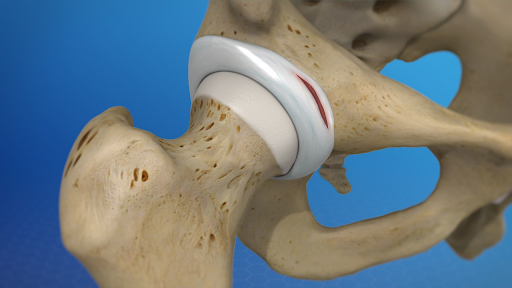
Physical Therapy for Hip Impingement
Hip impingement occurs when the femoral head (ball of the hip) pinches up against the acetabulum (cup of the hip). You may feel pain and stiffness in the groin or front of the thigh. This often occurs when bending forward at the hip. Examples include riding a bike, tying shoes, or sitting for long periods of time. Hip impingements are usually caused by an abnormal shape of the “cup” or “ball” of the hip joint. These impair the mechanics of the hip. Your therapist will perform soft tissue mobilization and joint mobilization as necessary to improve the mobility of your hip and reduce tightness in this area. Your therapist will also teach you hip and core strengthening exercises as well as other exercises personalized to you to improve your ability to walk, run, or whatever activity you need to do.
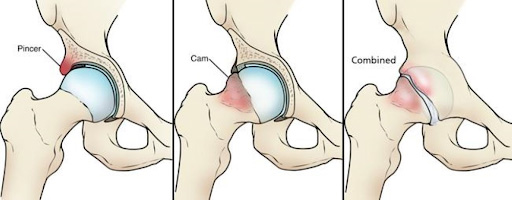
Physical Therapy for Piriformis Syndrome
Piriformis syndrome occurs when a muscle located in the buttock gets tight and spasms and can compress the sciatic nerve that runs under it. You may experience symptoms such as pain in the buttocks region, pain shooting down the back of the leg, numbness and tingling. You may have difficulty sitting for a long time, climbing stairs, walking, or running. Your physical therapist will help address any strength and mobility deficits in the hip as well as improve your hip and core strength through personalized exercises.
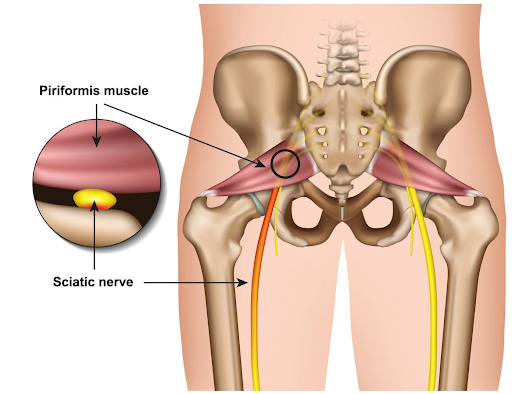
Physical Therapy for ITB Syndrome
ITB syndrome occurs when a tendon called the iliotibial band gets irritated or swollen from rubbing against your hip or knee bones. You may experience aching or sharp pain on the outside of your hip with repetitive activities like running and jumping. Your pain may be due to muscle imbalances at the hip which can affect the positioning of your knee and cause excess stress along the IT band. Your physical therapist will teach you mobility as well as strengthening exercises for your legs and core to improve your posture and balance.
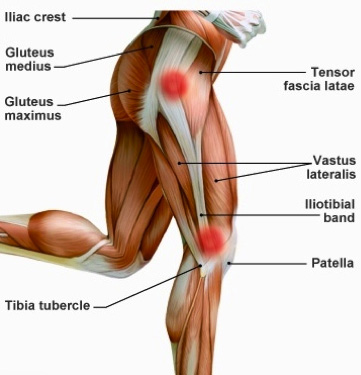
Click here to schedule an appointment with us to find out more how to manage your hip pain!
